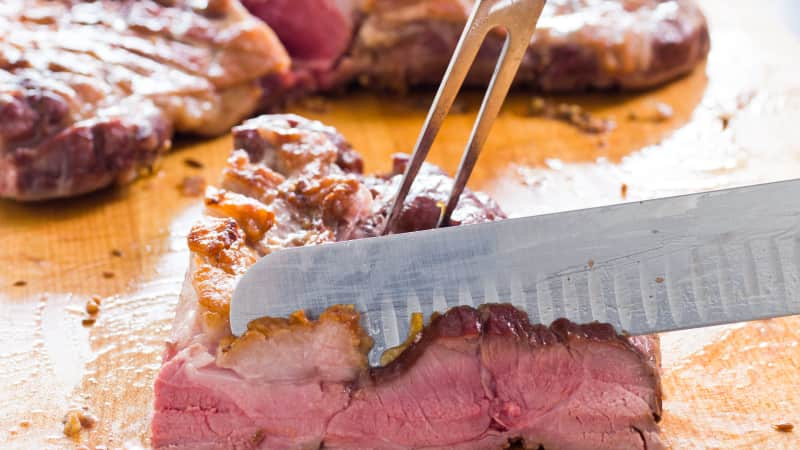Sheep are the oldest domesticated animals, raised starting around 9,000 years ago in the Middle East. Today some breeds are kept for their milk or wool, but many are slaughtered for meat. Lamb comes from sheep under 14 months old, while meat from older animals is called mutton.
Why Lamb Tastes Like Lamb
Published Mar. 21, 2019.

In the United States, most lamb is slaughtered between four and eight months, though milk-fed, or “hothouse,” lamb is slaughtered at six to eight weeks. The younger the lamb, the more tender the meat. Why? The tenderness of cooked lamb is directly related to the number of chemical cross-links holding the collagen proteins together. The number of cross-links increases with the age of the animal, and as the number increases, the process of breaking down the collagen to soluble gelatin becomes more difficult, requiring longer cooking times or higher temperature.
Sign up for the Notes from the Test Kitchen newsletter
Our favorite tips and recipes, enjoyed by 2 million+ subscribers!
Despite its tenderness, Americans don't eat a lot of lamb. While the world's per capita consumption has increased (from 3.95 pounds per year in 1965 to 4.17 pounds in 2007, according to the USDA), in the United States it has only gone down. Way down. Today, Americans eat just 0.88 pounds of lamb per year, compared with close to 82 pounds of chicken.
By contrast, annual consumption per capita of lamb in Australia is 26 pounds. In 1995, researchers conducted a survey of 600 homes in Tulsa, Oklahoma, and asked families to rank seven proteins (beef, chicken, fish, lamb, pork, turkey, and veal) on variables including taste, preference, and health. Lamb came in dead last.

This is in part because lamb has a strong and distinctive flavor. It's a flavor that comes mainly from its fat—in particular, branched-chain fatty acids (BCFAs) produced by bacteria in the lamb's rumen. (Research published in the journal Meat Science in 1997 proved that these BCFAs, which are found in a far higher concentration in lamb meat than any other meat, are responsible for this characteristic “gamy” flavor.)
The concentration and resulting pungency of these BCFAs depend in part on the breed of lamb, but mainly on the lambs' diet. Lambs raised on a diet of grass tend to have a more intense flavor than those raised on a diet of grain. The grassy, gamy flavors, known as “pastoral flavors,” that occur in pasture-finished lamb come from an increased amount of compounds called indoles, primarily one called skatole, found in the fat tissues. The amount of BCFAs and indoles increases with age.


The lamb that you buy in the store comes from a few different places. Domestic lamb is distinguished by its larger size and milder flavor, while lamb imported from Australia or New Zealand features a gamier taste.
This flavor change is largely due to chemistry: Imported lamb is pasture-fed on mixed grasses, while lamb raised in the United States begins on a diet of grass but finishes with grain. The switch to grain has a direct impact on the composition of the animal's fat, reducing the concentration of the BCFAs, and ultimately leading to sweeter-tasting meat.
More Fat Means Gamier Flavor in Lamb
Our testing shows that you can control the funkiness of lamb flavor by choosing between grass-fed and grain-fed, selecting particular cuts, and trimming more or less fat.In addition to choosing lamb that's grass-fed or grain-fed, you can control how gamy or mild lamb tastes by choosing the right cut. Cuts from the shank, shoulder (including roasts, chops, and stew meat), and leg (bone-in or boneless leg of lamb) have more fat and thus a more intensely lamby flavor, while cuts like rack of lamb, rib chops, and loin chops have less fat and taste sweeter.
Trimming more of the fat from a cut will also reduce its heady flavor. Learn about the experiment we conducted that shows just how much the fatty acids in lamb contribute to its unique flavor.




